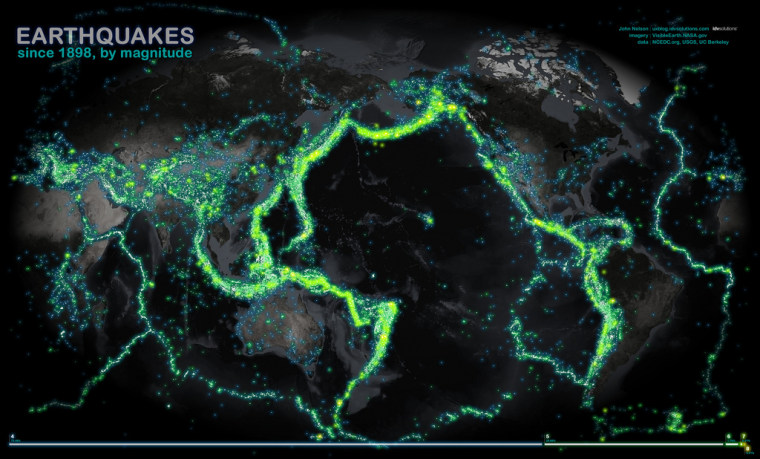The cluster of major earthquakes that struck the globe during the past decade can be explained by nothing more than random chance, researchers say in a new study.
Since 2004, devastating quakes have rocked Sumatra, Chile, Haiti and Japan, leading to speculation that we might be living in an age of great earthquakes, similar to a global cluster of temblors seen in the 1960s. Some researchers have even suggested that large quakes are linked across the globe, possibly triggering each other.
"We were curious as to whether or not earthquakes 'communicate' at global distances," researcher Tom Parsons, a seismologist at the U.S. Geological Survey in Menlo Park, Calif., told OurAmazingPlanet.
To see if the quake clusters of the 1960s and 2000s were part of a pattern, researchers looked at the timing between the world's largest earthquakes — magnitude 8.3 and above — at one-year intervals during the past 100 years. They compared these real quakes with simulated lists of large quakes with intervals between these quakes that one might expect from random processes. [ Video: What Earthquake 'Magnitude' Means ]
The timing seen between real-life large quakes was similar to what might be expected from randomness, the researchers found.
"The cluster seen in the last decade can be ruled out as random chance," Parsons said. "Yes, it's odd, but not anything one might not expect from a random process, where this kind of clustering is quite typical. If you think about flipping a coin multiple times, the pattern isn't just heads-tails-heads-tails — there are typically a few of each in a row."
These findings might disappoint some, because if large quakes were influencing others across the globe, such activity might give scientists a way to predict whether more quakes were on the way.
Still, "I could say that it's not actually disappointing — if quakes were communicating at global distances, after a big quake, the entire planet would essentially be an aftershock zone," Parsons said. "Every time there was a quake in Sumatra, my hazard might go up if I was in Europe. That appears to not be the case, which is overall good news."
Curiously, past research has shown that smaller earthquakes do apparently communicate at global distances. "After big quakes, you do see lots of micro-tremors all over the planet, but for some reason they don't seem to grow into big earthquakes," Parsons said. "We want to learn more about why some earthquakes grow big and why they don't."
Parsons and his colleague Eric Geist detailed their findings online Thursday in the Bulletin of the Seismological Society of America.
